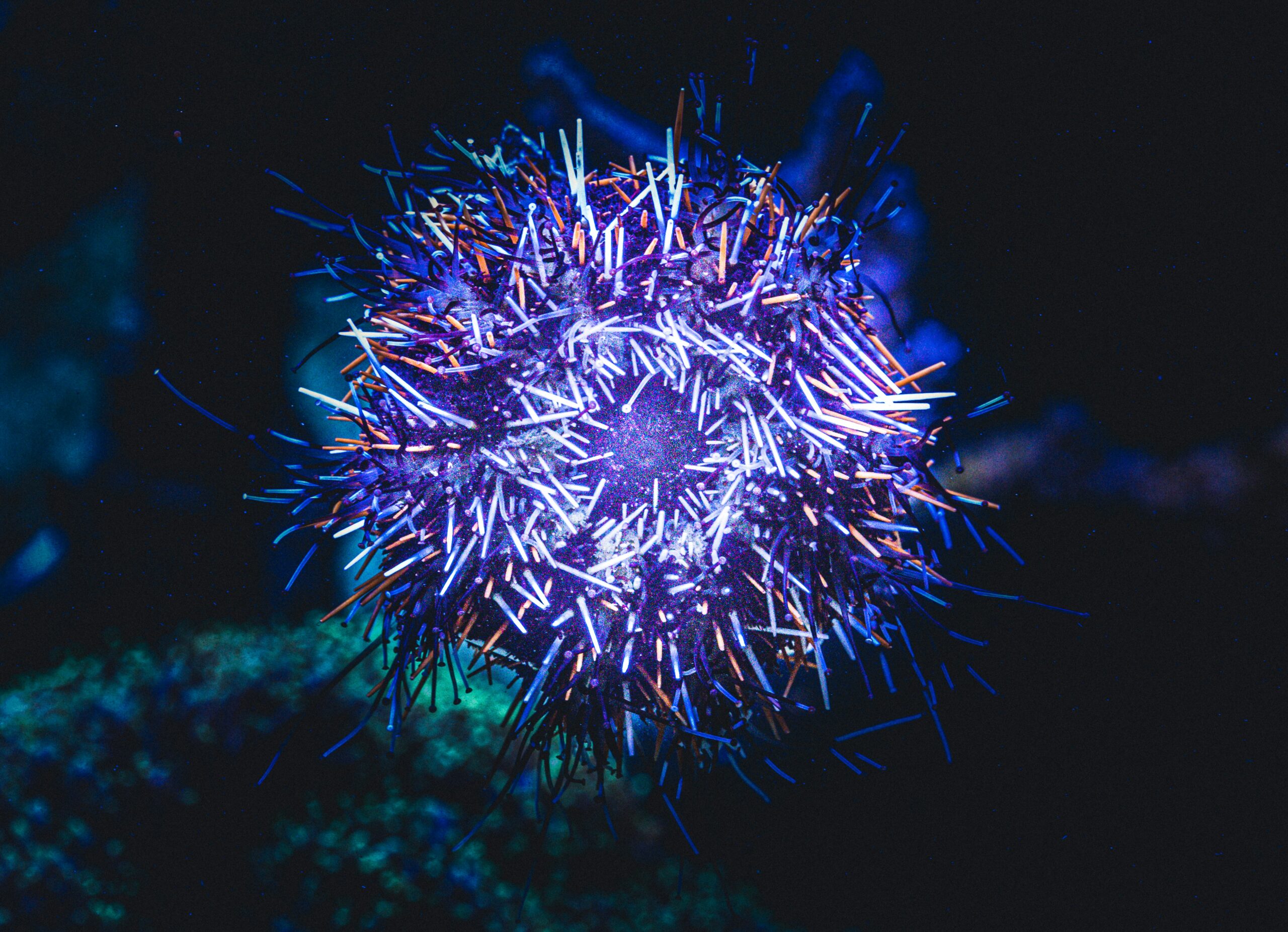Photo by Robert Reid
A massive volunteer-led effort to restore California’s devastated kelp forests has achieved remarkable success, with 5.8 million purple sea urchins removed from coastal waters and kelp canopy coverage increasing by 20-50% in restoration sites.
The unprecedented community-driven intervention has begun reversing a decade-long ecological crisis that saw purple sea urchin populations explode and strip away over 90% of kelp forests in some northern coastal regions, transforming vibrant underwater ecosystems into barren seascapes.
Purple sea urchin outbreak devastates marine habitats
Since 2014, California’s kelp forests have suffered massive losses primarily due to a surge in purple sea urchin populations. The voracious grazers consume kelp holdfasts—the root-like structures anchoring kelp to the seafloor—creating “urchin barrens” where diverse marine ecosystems once thrived.
Multiple factors contributed to the outbreak, including warmer ocean temperatures attributed to climate change, depletion of sea star populations that prey on urchins due to disease, and other oceanographic changes that disrupted natural predator-prey balances.
The loss affected not only marine biodiversity but also coastal economies dependent on fisheries and tourism supported by healthy kelp forest ecosystems.
Community mobilisation drives removal effort
Recognising the urgent need for intervention, community-based organisations, local dive shops, conservation groups, and scientific institutions collaborated to launch large-scale purple sea urchin removal programmes across key California sites.
Volunteer divers dedicated thousands of hours to physically removing overabundant urchins by hand from the seafloor using freediving and SCUBA techniques. The effort was supplemented by commercial divers harvesting urchins for the seafood market, creating sustainable removal incentives.
Teams developed systematic dive plans targeting dense urchin aggregations in former urchin barrens, with divers working in grids to ensure thorough coverage and prevent new kelp growth from being consumed.
Kelp recovery demonstrates ecosystem resilience
Following sustained urchin removal, many sites have witnessed encouraging signs of kelp regrowth, with bull kelp and giant kelp species beginning to reestablish and canopy coverage increasing visibly.
The kelp regrowth has facilitated the return of fish species, crabs, sea stars, and marine mammals, reactivating food webs and ecological balance. Marine biologists report that restoration sites show increased biodiversity compared to untreated urchin barrens.
Commercial fishers become conservation partners
The restoration effort includes commercial fishers who shifted from harvesting to conservation work. Terry Herzik, a longtime red sea urchin fisher, started working with the foundation in 2012, spending nine hours daily smashing purple urchins instead of collecting them for sale.
Ford emphasises the partnership approach: “We were paying the fishermen to put back the forest, and then they could then go back in and fish from there again.” The project specifically targets “zombie urchins” rather than healthy specimens that support livelihoods.
This collaboration demonstrates how conservation and industry interests can align, with restored kelp forests ultimately benefiting commercial operations. Research shows that red sea urchin gonads weigh 168% more in areas where kelp has been restored, improving the quality of the prized roe (known as uni in Japanese cuisine) available for harvest.
Economic and environmental benefits demonstrated
Kelp forest restoration delivers both environmental and economic benefits for coastal communities. Healthy kelp beds support commercial and recreational fisheries, attract tourism, and stabilise coastlines.
The forests also contribute to climate change mitigation through carbon sequestration and provide shoreline protection from storm impacts. As kelp-dependent species vital to local fisheries rebound, the project promises economic as well as environmental returns.
Challenges remain for long-term success
Despite promising progress, challenges persist for sustained recovery. Sea urchin populations can rebound quickly if predators remain depleted or environmental conditions deteriorate, requiring sustained removal efforts over multiple years.
Climate-driven warming and marine heatwaves may continue stressing these ecosystems, necessitating adaptive management and regional cooperation. Future efforts involve exploring innovative removal technologies, restoring natural predators like sea stars, and cultivating kelp in nurseries for transplantation.
Model for global marine conservation
The California kelp restoration project highlights a growing model of direct human intervention to repair ecosystems affected by climate change and human impact. It exemplifies proactive stewardship and adaptive management that could be applied to other coastal and marine habitats globally.
As kelp canopies reclaim lost territory and marine life flourishes, the project demonstrates how community mobilisation and scientific guidance can reverse environmental degradation, offering hope for similar restoration efforts worldwide.
